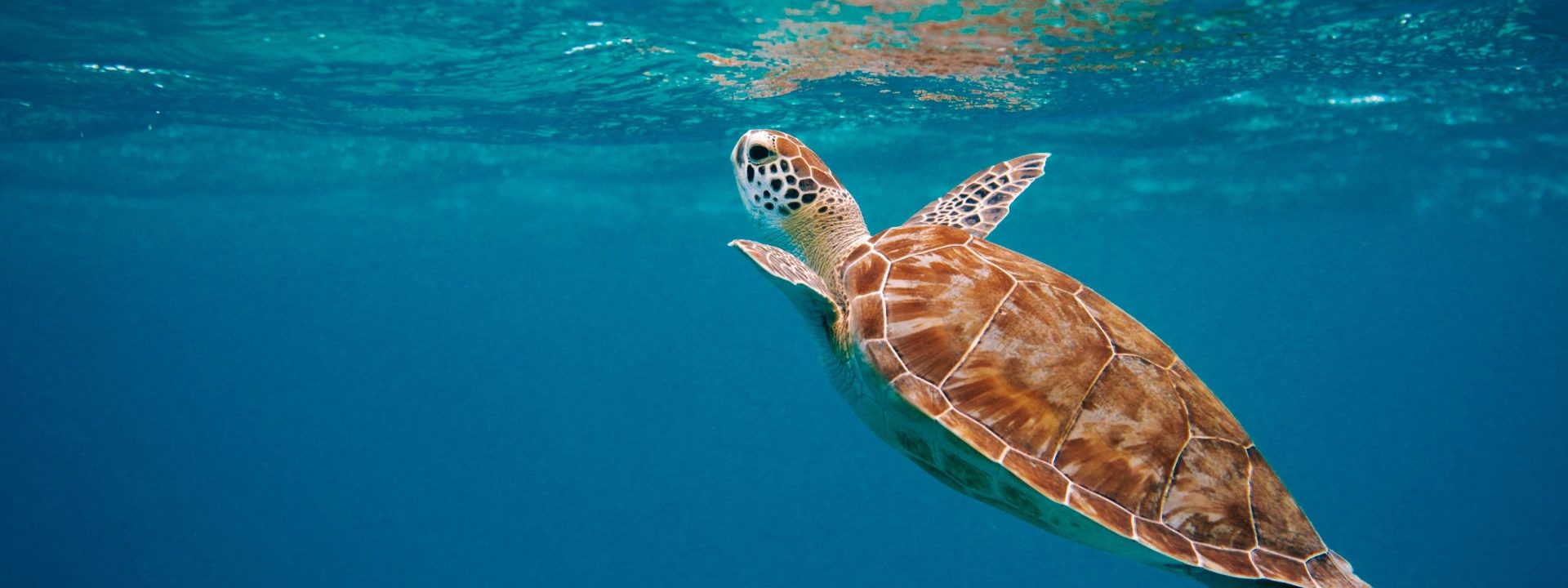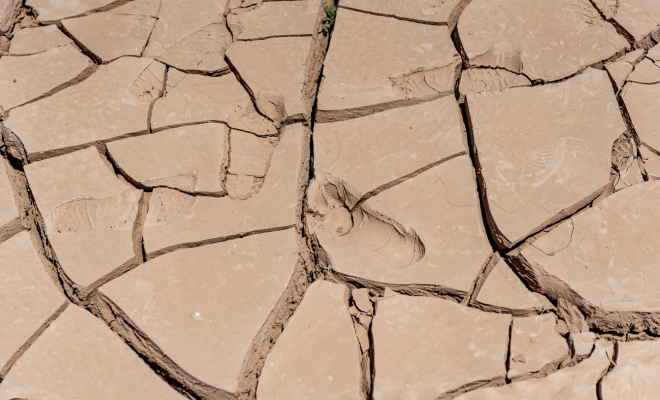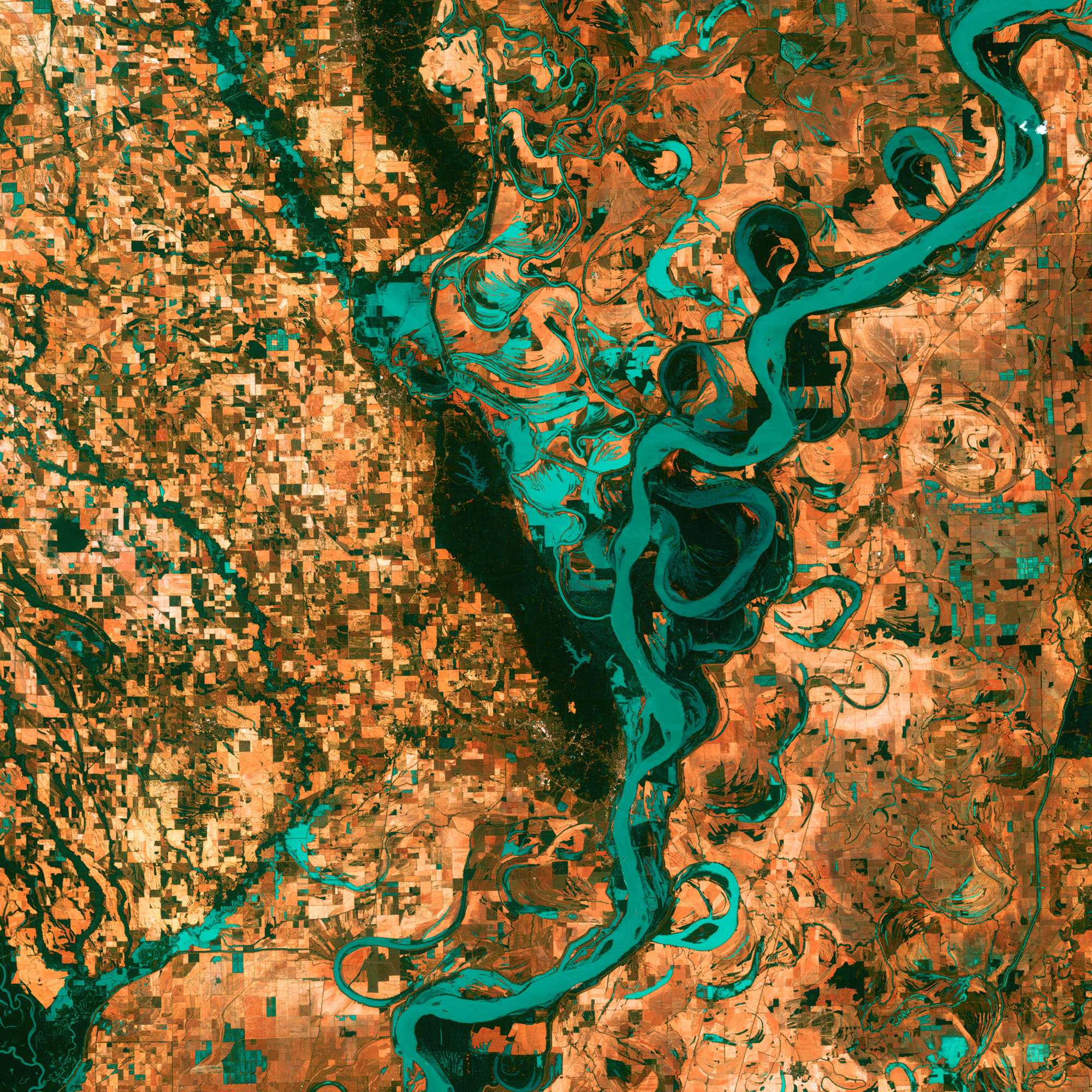
NASA has monitored the number and status of key crops around the world for one of its satellite studies. Image Mississippi River. ©NASA Landsat.
The Covid-19 pandemic has highlighted the severe social and economic gaps we face, and has shown the damage we have caused to the environment. Climate news have deteriorated year by year and month by month. Every time we look deeper and more closely at nature, we discover further decline. Questions arise and we need more and more answers. According to the European Environment Agency (EEA), environmental degradation is the first factor that explains the latest pandemics and we will need more vaccines and universal treatments.
The threat is real and undeniable, but so is the increase of international awareness of the importance of relying on science to progress towards solutions. In spite of skeptical and revisionist movements, confidence in scientific methods has permeated most governments and institutions, as well as public opinion and the urgency in finding answers has become widespread.
Water in satellite view
Paradoxically, the pandemic has shown us interactions and degradation with the environment s were not aware of and has opened new doors to science; more problems have become evident, while new theories and areas of experimentation have appeared.
A good example is NASA’s initiative to make satellite data obtained during the most drastic lockdown months in industrial societies available to scientists. The human footprint on air and water quality has been revealed by default in ecosystems and the U.S. space agency has decided to fund various environmental research projects. Four of them make direct reference to the water cycle and address essential issues for the mitigation of the climate and environmental crisis and our adaptation to its consequences.
Stopping the deterioration of coral reefs and mangroves
The pandemic made a natural experiment possible to better study how urban pollutants affect seawater quality and the health of coral reefs, one of the major concerns of oceanographers in forecasting the evolution of marine biodiversity, a fundamental factor for food security in the planet and the stability of the water cycle.
One of the projects focuses on the coast of Belize where the largest coral reef of the northern hemisphere is located, along with extensive mangrove forests, one of the most effective carbon sinks whose degradation has increased in the last few decades. This project will study how the decline in tourism during the lockdown, which caused a decrease in pollutants such as nitrogen and phosphorus, is affecting the quality of water. Data provided by satellites also allows us to observe how changes in land use can disrupt water ecosystems.
The conclusions of this research could be very valuable for planning the management of the territory, especially the urban one, as this concentrates most pollutants, and for improving the efficiency of the water cycle, one of the major technological and governance challenges of the predominantly urban future of humanity.
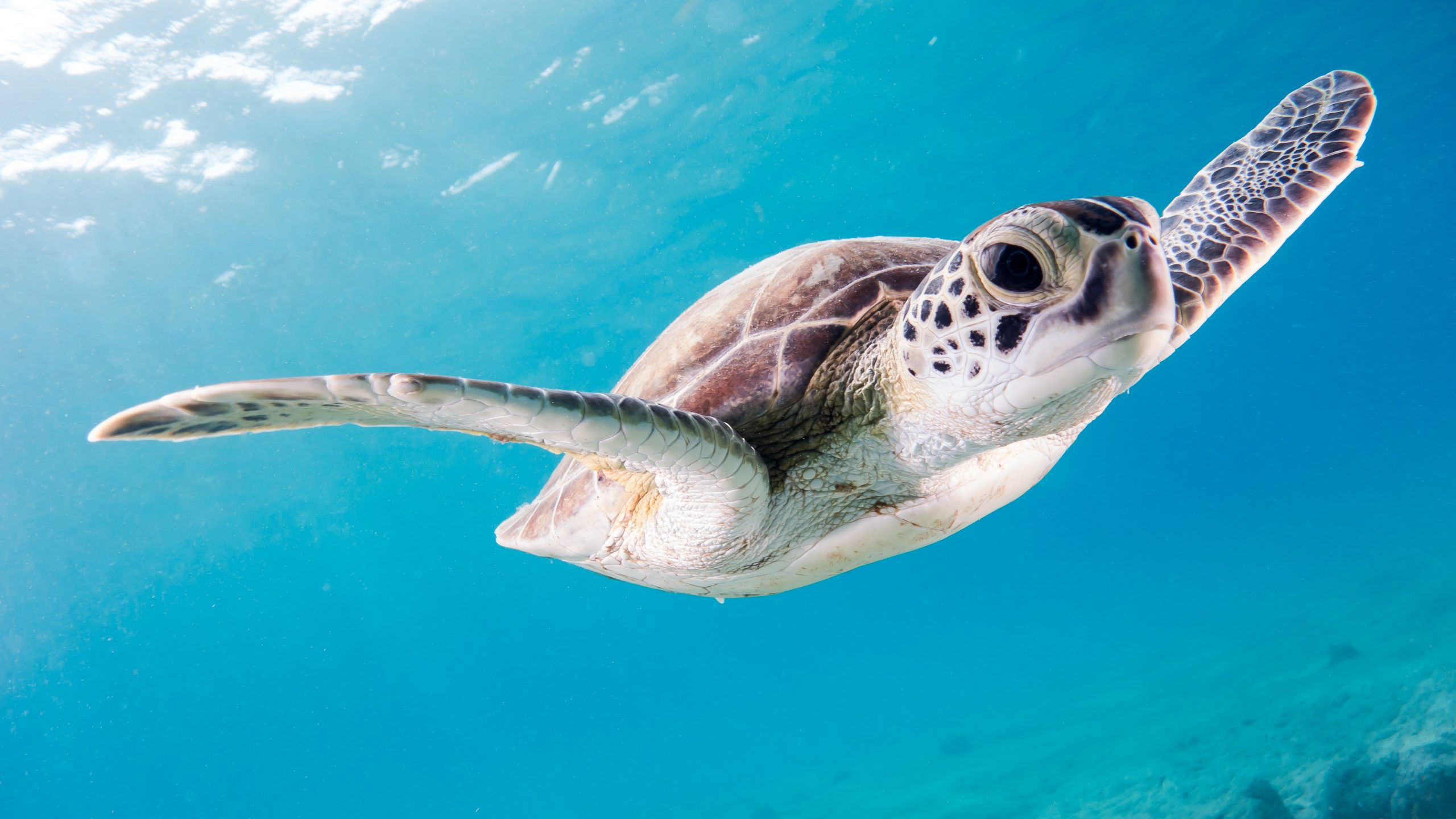
Seawater quality and the health of coral reefs, one of the major concerns of oceanographers in forecasting the evolution of marine biodiversity. ©.© kris-mikael-kriste-unsplash
Water-air exchanges: we do not know everything
One of the main effects of the reduction of economic activity was the decrease in the emission of nitrogen dioxide (NO2) into the atmosphere and, as a consequence, its deposition in water. In general, an overabundance of nitrogen and other chemicals causes eutrophication of river and coastal waters due to the excessive growth of algae, which has a negative effect on the water quality and ecological balance.
One of the projects aims to study the behavior of coastal aquatic ecology during the reduction of eutrophication, using new data of the changes in atmospheric conditions and water quality. The findings can be very useful, especially in the industrialized world, to deepen the understanding of the exchange of nutrients and pollutants between air and water, a process we know relatively little about, and thus improve the political and economic responses towards more efficient regulations.
Pollution and rainfall, a perverse relationship
Less air pollution can mean less rainfall. This is an issue that meteorologists have studied for the last few years and the fact that the atmosphere was less polluted during the global lockdown can also improve research.
The notable decrease in rainfall in the western United States, which has had one of its direr consequences in the dreadful forest fires of northern California, has coincided with the drastic reduction of aerosols and airborne particles. These act as condensing agents of atmospheric humidity, forming drops and ice crystals that precipitate in the form of rain or snow.
Scientists of the University of Iowa will use satellite data of water vapor and aerosols and by means of a numerical model will combine variables such as humidity and temperature with atmospheric physical-chemical properties and processes. The goal is to understand the extent to which aerosol reduction is responsible for the decrease in rainfall compared to the natural variability of California’s climate system.
In addition to understanding how Covid-19 is having an impact on the natural environment, the project can improve weather forecasts and climate projections, something that would facilitate the management of the seasonal storage and distribution of water resources.
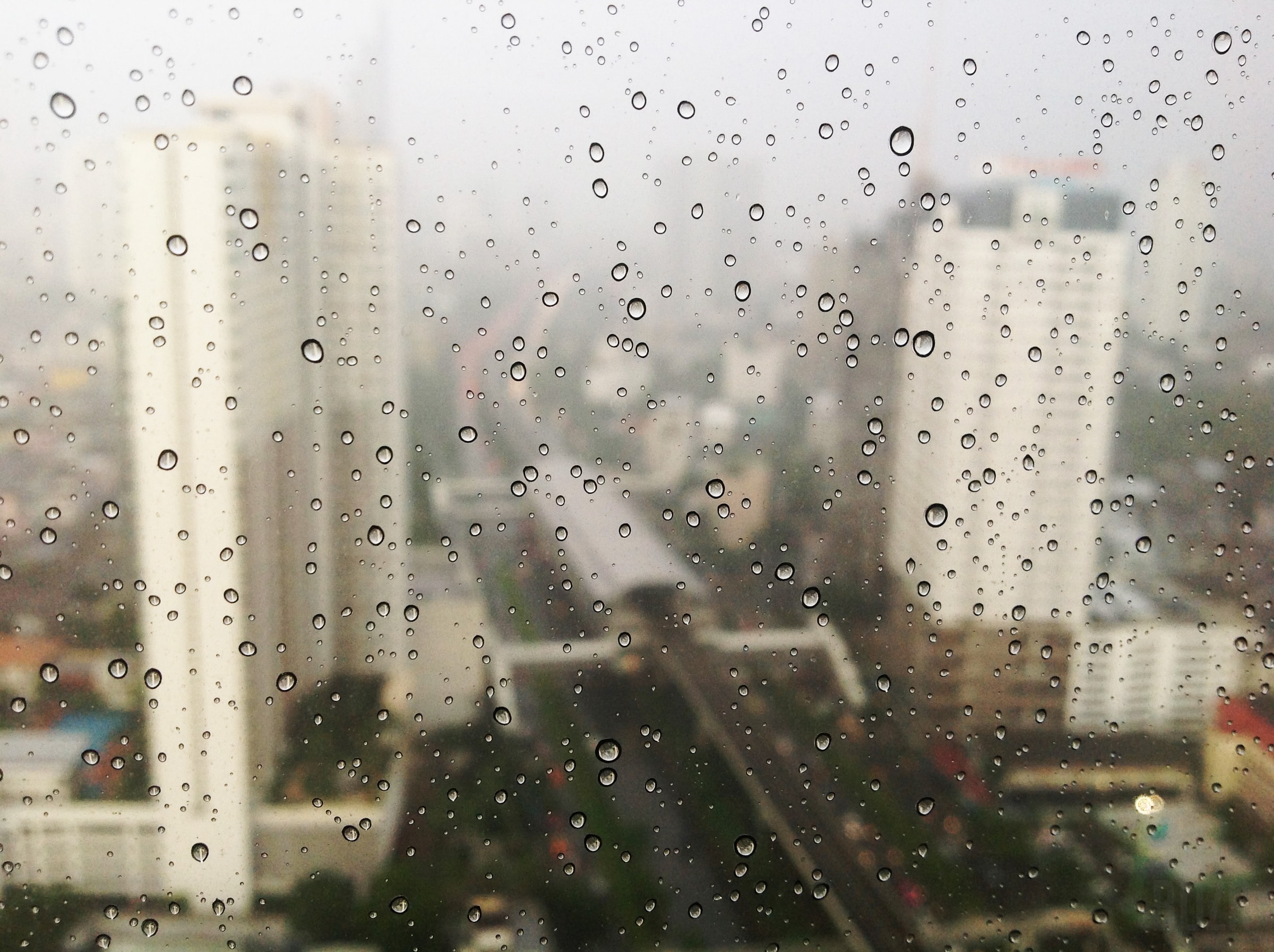
Less air pollution can mean less rainfall. © thanun-buranapong –unsplash
Beyond 2030….
According to a recent UN report, 9.7 billion people will inhabit the Earth by 2050. That will be 2 billion more than today, a number equivalent to the entire population of India, United States, Russia and Japan in 2019. Whether they will be able to feed themselves, have access to water and have renewable resources to produce the necessary goods for life is uncertain. Uncontrolled global warming, the degradation of the environment and pandemics threaten a dystopian future for a humanity that is barely making progress towards the SDGs in 2030 and is wondering how it will reach the mid-century.
It is only by better understanding the consequences of the unsustainable that we can pave the way to sustainability. Environmental science makes us see the inevitable interconnection between all the variables the evolution of life on Earth depends on. Our health and that of the planet are related, so much so that it would be convenient to consider they are one and the same. It is urgent for us to find answers to transcend the uncertainty that the deterioration we have caused to the planet leads to. We need science and its method to know how best to act, not only with the 2030 SDGs in mind but beyond…


